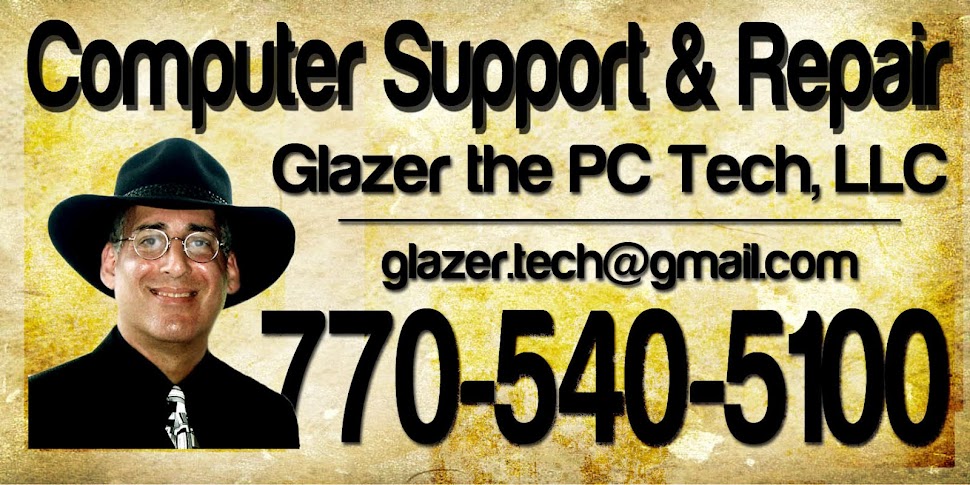arthur@glazerthepctech.com
Not all printers are created equal. Nor are the inks they use. The main thing to consider when you buy a printer is what the cost would be for replacement cartridges. And not all of them are the same.
I recommend buying a printer with more than a black and a tri-color cartridge. With them, if you run out of yellow, the whole cartridge is trash. My Epson Photo Stylus has six cartridges, each at a (retail) cost of about $15. When yellow runs out, that's what I replace.
I also have a Lexmark wireless All-in One that I failed to research properly prior to buying it. I now know that when the color runs out, it will not print at all, not even in black. It's a good question to ask at the store.
Some printers cost less than $50. They come with a starter cartridge that is usually less than half full. But to get a refill for it could cost the same as the printer itself. It's like the razors at the drug store. They give you the handle and a blade and then charge $20 for four more blades.
Most of us use either ink jet or laser printers; some businesses still use dot matrix. There are photo printers, wide formats, all-in-ones and wireless. You can now purchase a printer, scanner, fax, copier combo with wireless for just more than $100. Again, the replacement ink is where they get you. But don't be intimidated by the manufacturers telling you that you need to use costly OEM (original equipment manufacture) ink only. You don't.
There are after-market cartridges that are fine. You can also use kits to refill them yourself. A $20 kit from the supermarket will fill 10 cartridges. Considering most ink jet replacements cost $20-$30, that's quite a savings.
The stores that sell the new expensive OEM products also offer alternatives. Office Depot for example, will give you a $3 credit per used cartridge that you bring in and then offer a 10 percent discount on new purchases. You can bring in five per day.
Walgreens will refill your cartridge for $12.99 and Cartridge World will sell you a pre-used refilled cartridge, refill yours or provide an OEM for you.
Another alternative is bulk ink systems. Instead of have three to six cartridges with 20 ML of ink each, you could have tubes running to bottles adjacent to your printer, each holding 60 ML (or more). You can get more than three times the ink for less than a quarter of the price. Again, that's a good savings.
There are a few more things you should know about ink and cartridges. When your printer tells you that you need ink, you don't. Not yet, anyway. I can use mine for two weeks after I get the initial warning. I keep using it until the printout has white spaces in it.
Remember, HP, Canon, Lexmark, Kodak and Epson make money from ink, not from printers. So don't be a hurry to toss a cartridge that may be 20 percent full. But if you let it run completely dry, you could damage the printer. Monitor the ink levels carefully.
When you do replace a cartridge, do it soon after it is used up. The residual ink will dry on both the print head and the cartridge if you don't swap them out as soon as they are empty. They can be cleaned and some kits will even provide a solvent to use for just that. But it's extra work that can be avoided.
Most cartridges can be refilled at least three or four times, often times even more than that. There are certain types that can't be refilled at all.
The Internet is another place to find deals on ink. A good online resource is inkguides.com, an independent site full of useful information about ink for your printer. It will direct you to sites like 123refills.net, 4inkjets.com, inkcartridges.com and others. Some even offer free shipping along with heavy discounts.
A great piece of related software is Ink Saver from inksaver.com. It is better than using draft mode for reducing ink costs. For each document you are about to print, you'll get a pop-up with a slider, asking what percent of ink you want to save on that document. The last I saw, it was about $30, with a trial available.
The manufacturers all make $49 printers as well as $849 models. Some may use ink that is better for photos or that is quicker drying. Some may include bells and whistles that others don't have. Some have a fax incorporated in it, while others are wireless.
Just like Internet Explorer and Firefox, both get you to the Internet; all printers will get the job done. Some may do it better or cheaper than others. Some last longer or have more gadgets.
The bottom line is, get what you need and what you can afford. But don't be bullied into buying expensive ink.
Arthur Glazer is a freelance writer and computer technician in Gainesville. His column appears biweekly. Arthur welcomes your computer questions and ideas for future columns.

No comments:
Post a Comment
Got a Comment - or a quick question...